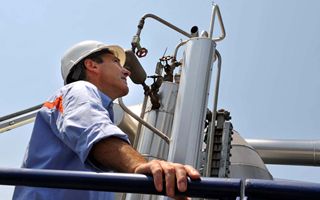(Finance) – “The EU needs hydrogen supply corridors to achieve the objectives set by the REPowerEU plan. The creation of an integrated hydrogen network is the only efficient way for Europe to connect the different large production sites, import routes and options with key industrial clusters and demand centres, whilst managing to diversify sources and secure supplies, maintaining accessibility, security and energy independence.” This is what emerges, according to the Energia Oltre press agency, from the report of the EU Hydrogen Alliance published yesterday.
THE SIX EU HYDROGEN PROJECTS
The focus is on the six projects currently approved by the European Union, namely the South Central H2 corridor, which concerns Italy, the Iberian H2 corridor, the North Sea H2 corridor, the Baltic Sea Region H2 corridor, the Eastern H2 corridor and the South-eastern H2 corridor.
BARRIERS TO OVERCOME ON FID, ANNUAL MONITORING IS REQUIRED
Almost all projects contributing to the creation of the six corridors are already present in the first published PCI/SME list, based on the revised TEN-E Regulation (in 2022), with the support of the respective Member States and national authorities of national regulators . “However, there are still barriers to overcome, as we need to reach the Final Investment Decision status and start construction work as soon as possible and in a coordinated manner,” underlined the European Hydrogen Alliance which as a next step , calls for the establishment of an annual monitoring of the European progress of the sector to which “the Transmission & Distribution Roundtable could contribute”.
THE IMPORTANCE OF EUROPEAN HYDROGEN CORRIDORS
The six corridors “are the cornerstones of a pan-European network and their development will lead to a timely and successful introduction of hydrogen infrastructure to achieve Europe’s decarbonisation goals (for imports and local production) by 2030 and beyond. Hydrogen transport corridors support the rise of renewable energy and strengthen security of supply, with connections between supply and demand regions directly contributing to significant savings compared to a fragmented grid. and isolated clusters,” the report reads.
MORE CONCRETE COMMITMENTS MAY BE NECESSARY TO ACHIEVE FID STATUS
Indeed, although most of the projects so far have the necessary political support (a prerequisite for being included in the PCI/SME list), to achieve FID status “more concrete commitments may be needed, thanks to intergovernmental agreements that will support the implementation “.
As stated in the Learnbook on Financing of Hydrogen Projects: “The identified hydrogen corridors all span more than several Member States, with one specific corridor being implemented only at the speed of the slowest Member State. To avoid these corridors become a political football and are delayed, a mechanism could be introduced that allows the European Commission to accelerate the respective planning decision in the Member State concerned. This would help ensure that the energy transition takes place in a timely manner and in accordance with objectives and plan deadlines RePowerEU”.
POLICY/REGULATORY ISSUES
Among policy/regulatory issues, the European Clean Hydrogen Alliance’s Transmission & Distribution Roundtable Learnbook identifies the rapid transposition of EU law into national systems; addressing the lack of certifications, standards and guarantees of origin for H2 imports; intergovernmental agreements and coordinated infrastructure planning across all energy sectors; support for international strategic partnerships and cooperation with third countries that have the potential to produce and export renewable H2″.
And again: “Continue to allocate funds for R&D and innovation initiatives and for public-private partnerships that help improve and reduce the costs of imported technologies and help address and better understand the climate and environmental impacts of H2; understand better the climate and environmental impacts of hydrogen; Encourage and promote the development of regulatory sandboxes; Accelerate authorization procedures for infrastructure projects”.
From a financing perspective, tools are requested to reduce the risk of investments; support for studies that will help the maturation of projects; increase European and national funding”. While from the point of view of the value chain it is suggested to stimulate industry demand for renewable and low-carbon H2 and to close the cost gap compared to fossil products but also to incentivize clear objectives on the demand side and promptly restore storage sites and their connection to hydrogen networks, as they will be an important part of the value chain. Finally, it is suggested to support the growth of large-scale production projects in third countries with the international pillar of the EU Hydrogen Bank.
MONITORING PROGRESS
As a next step, it is proposed to carry out an annual monitoring of progress across the EU with pre-agreed key metrics for all Member States. According to the Hydrogen Alliance the parameters may concern demand commitments in terms of number of offtake contacts signed, date of full implementation of missing regulatory frameworks, number of authorization procedures completed, number of projects (FID) started and so away. “Agreement on such parameters requires adequate discussion between member states, policy makers, regulators and industry and industry.” And “the T&D Roundtable could contribute to the work of such a monitoring report.”
